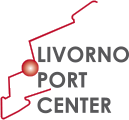
06 Ott Porti & dintorni. Cosa fa la portualità internazionale per reagire alla crisi. Numero 20
Condividiamo, in questo 20° numero di “Porti & dintorni” il report stilato da Thanos Pallis (con il contributo del team di UNCTAD-Conferenza delle Nazioni Unite sul Commercio e lo Sviluppo, composto da Jan Hoffmann, Frida Youssef, Hassiba Benamara & Ahmad Ayoub). Si tratta di parte della prima fase del progetto “Transport & trade connectivity in the age of pandemics: Contactless, seamless and collaborative UN solutions”.
Maritime transport underpins global supply chain linkages and economic interdependency with shipping and ports estimated to handle over 80 per cent of global merchandise trade by volume and more than 70 per cent by value. As a result, when disruptive factors such as pandemics occur, the sector works as a transmission channel that sends shockwaves across supply chains and regions.
Strengthening the capacity of countries to anticipate and recover from disruptions affecting their maritime supply chain is crucial. This requires a good understanding of how the COVID-19 affected the sector, including the challenges faced and the solutions that had been adopted. Therefore, and building on its broad mandate in the field of transport and trade facilitation, UNCTAD carried out a preliminary assessment of the immediate impacts of the COVID-19 disruption on the maritime supply chain and trade over the first half of 2020.
The assessment was articulated around the following issues:
- Impacts of the COVID-19 on the maritime supply chain and challenges faced.
- Response measures introduced by relevant stakeholders.
- Lessons learned and implications for the maritime supply chain of the future.
Against this background, Chapters 1 and 2 of the present report describe the immediate impacts of the pandemic on maritime trade flows, ship calls, and liner shipping connectivity in the first half of 2020. Chapter 3 highlights relevant responses and adjustments made at the port level as well as by other stakeholders across the maritime supply chain to cope with the disruption and maintain business continuity, while at the same time, protecting workers and ensuring timely delivery of essential goods during the crisis.
Sia a livello europeo che a livello mondiale le diverse realtà dello shipping si sono attivate per cercare di analizzare il contesto della crisi (post)Covid-19 e cercare risposte di breve e medio termine alle difficili sfide che si prospettano per la ripresa del settore.
I porti del sistema dell’Alto Tirreno stanno contribuendo in vario modo a questa attività, collaborando con le istituzioni locali e territoriali e con le associazioni internazionali stesse.
AdSP MTS ha creato una sezione dedicata nel proprio sito istituzionale (Osservatorio Covid-19), come del resto altre istituzioni omologhe e associazioni operanti nei vari settori della portualità.
Il Livorno Port Center, coerentemente alle proprie funzioni di centro di diffusione della cultura e delle attività marittimo-portuali, proporrà, nelle prossime settimane, aggiornamenti periodici sulla panoramica internazionale, con un focus particolare sull’interazione porto-città e sugli aspetti socio-economici presi in esame nelle newsletter delle diverse associazioni internazionali.
Parte degli aggiornamenti che verranno pubblicati saranno in lingua inglese: attingeremo direttamente alle fonti, con l’intento di dare maggiore risalto e maggiore diffusione a notizie che hanno appunto respiro internazionale.

